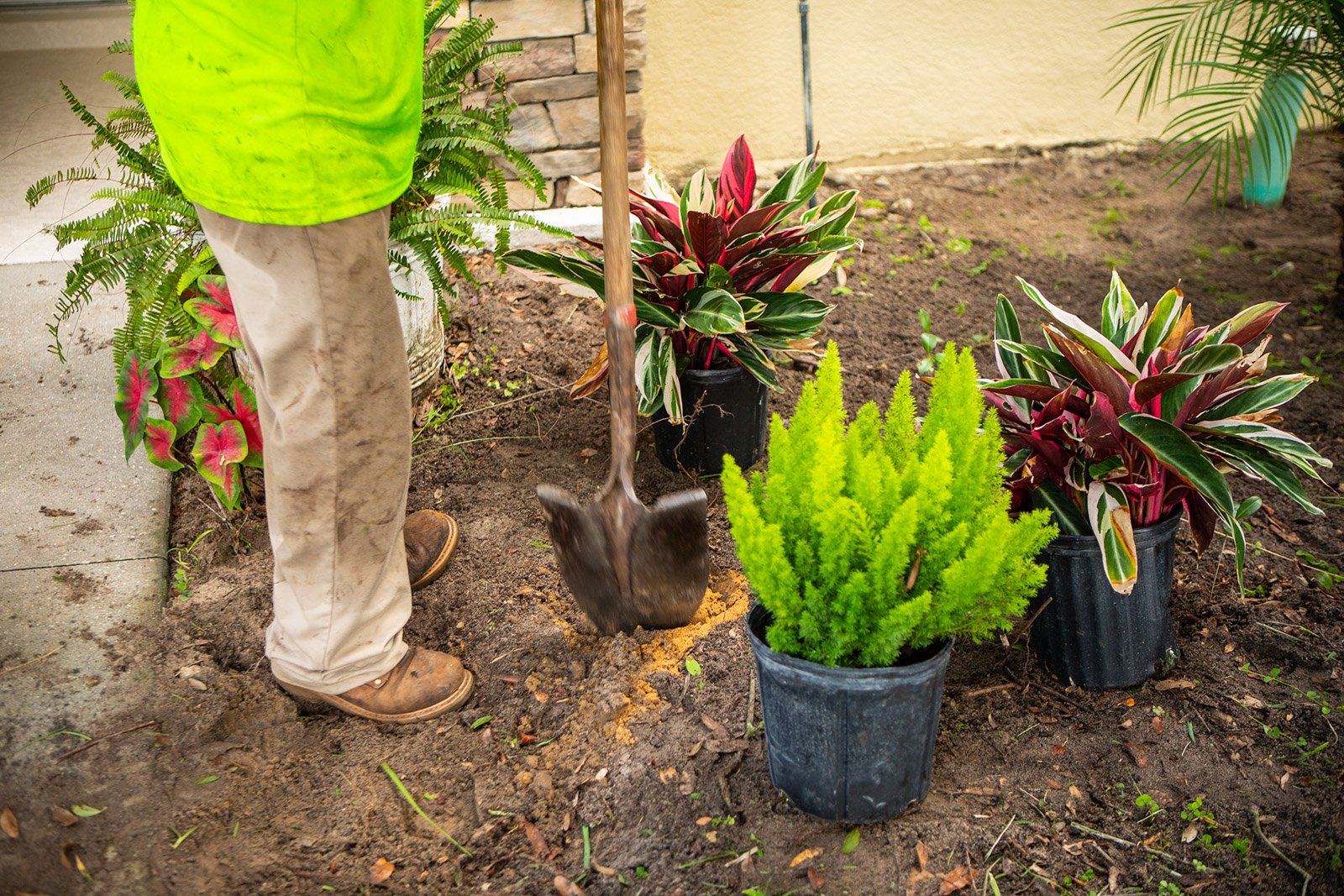It’s normal to be a little nervous about your new sod installation.
It’s a big investment. You’re bound to have questions. Our comprehensive sod care guide offers detailed information about watering your new lawn.
But we’ve rounded up a few other common questions about sod, from rolling to fertilizing to spacing.
Feel weird about asking if your new sod should be fertilized?
Relax — we’re all friends here.
1. Should Sod Be Rolled?
Nope. This used to be common practice. People thought rolling sod after installation helped push out any air pockets.
But it’s not necessary. Sod should not be rolled.
2. Should New Sod Be Fertilized?
Yes. New sod should be fertilized right away.
A starter fertilizer will encourage your new sod’s roots to get established.
Fertilizing new sod will strengthen the roots. The more durable the turf, the less susceptible the grass will be to disease and insects.
Remember, fertilizing doesn't stop here. Plan to continue feeding your lawn throughout the year to keep it healthy.
3. Should New Sod Be Aerated?
Not right away. You should wait until your sod is fully established before aerating — at least six months.
After that, feel free to aerate your lawn once a year, especially if your lawn has lots of tree roots.
4. Should Sod Be Level With Concrete?
Yes. The root ball will be lower, but the grass should be level with concrete. It looks better and prevents water runoff.
5. Should Sod Be Staggered?
Not necessary. Sod does not need to be staggered. The grass will all grow together. One exception is a steep hill. Then it helps to stagger the rolls.
6. Should Sod Be Installed at a Certain Time of Year?
Sod can be laid practically any time of the year here in Orlando. Because its roots are developed, sod grass is able to establish itself in prepared soil in almost any season, unless the ground is frozen.
Zoysia sod is happiest if it’s at least 80 degrees, but it will still establish at lower temperatures.
St. Augustine is a little finicky during the rainy season June through September, but will still establish.
If you have heavy shade, you might avoid installing new sod June through September. It often won’t dry out enough with all the rain and could rot.
But in general here in Florida, you can have a new sod lawn installed any time of year
7. Should Sod Be Squishy?
Nope. If your sod is squishy, that’s a sign you’re watering too much. Cut back a bit on the water.
8. Should Sod Be Laid on Top of Existing Grass?
No. This might seem like a pretty nifty shortcut, but it could kill your new sod if the grass can not make contact with dirt. It also does not allow for proper grade. So don't lay sod on top of existing grass.
Removing your old lawn before laying new sod is crucial for a healthy root system.
9. Should the Rolls of Sod Overlap?
No. It’s tempting to do this, to make sure there aren’t any gaps between rolls. But you’ll end up with an uneven, lumpy lawn. Line the seams up just right, with no overlap and no space in between.
Where Should You Get Your Sod in Orlando, FL? Trust Ground Source
If you have a lot of sod questions, that’s good. It means you care about the quality of your new lawn and your sod installation.
We’re happy to answer your questions. Even if they’re sort of weird, like “Should sod be squishy?”
We leave you with answers even after we install your fresh new sod. You’ll get a detailed sod care guide that tells you everything you need to know to care for your new sod lawn during the crucial first few weeks.
We’re sod experts, but our skills don’t stop there. We’re with you every step of the way as you plan your perfect outdoor space.
Sod, irrigation, landscape design: Let us transform your yard from an embarrassing eyesore to a place you spend every spare minute.
Are you ready to enjoy the vibrant, impressive yard you've always wanted? Request a quote today! We’ll help you review your options and then transform your property.








